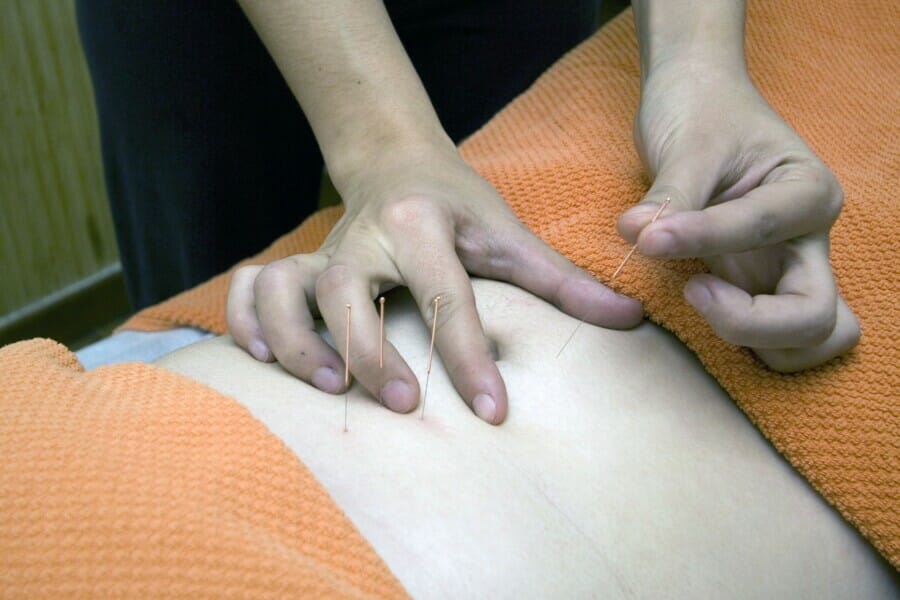Acupuncture Or Massage: Which One Helps Better Muscle Restoration
Why does recovery matter? Imagine your muscles as an elastic band in a hair tie; overuse without rest stretches it out, making it less effective. Unlike the hair tie, resting your muscles allows them to recover their strength and resilience.
When recovering from physical activities, massage and acupuncture stand out as beneficial choices for improving blood flow, which is vital since it transports healing oxygen to your muscles.
To understand which is superior for muscle recuperation, we sought insights from professionals.
The Role of Massage Therapy in Muscle Recovery
Massage therapy is a time-honored approach to wellness, using tissue manipulation for health benefits.
According to Clinton Kyles, CMT, at Squeeze, massage is especially good for muscle recuperation. It boosts circulation, helping oxygen and nutrients reach the muscles while flushing out waste like lactic acid. This facilitates quicker repair and diminishes muscle pain, commonly referred to as delayed onset muscle soreness or DOMS.
Advantages
- Better circulation: Kyles emphasizes that enhanced blood flow ensures a quicker healing process for your muscles.
- Less muscle pain: Alleviating tension decreases the buildup of lactic acid and consequently DOMS, making a swift return to activities possible.
- Greater flexibility and motion range: Flexible muscles are less injury-prone, leading to improved athletic performance.
- Stress relief: Massage therapy lowers stress hormones, fostering mental wellness which is crucial for recovery.
- Improved sleep: Sleep quality is a cornerstone of muscle repair, notes Kyles.
“Massage therapy considerably accelerates recovery by augmenting blood circulation, which supplies oxygen and nutrients while eliminating metabolic waste like lactic acid. This hastens healing and lessens muscle discomfort frequently felt after intense activities.” — Clinton Kyles, CMT
Drawbacks
Massage isn’t without potential side effects such as nausea, headaches, muscle aches, or bruising. However, proper hydration before and after can mitigate these issues. While massages can be costly, averaging between $75 and $130, they may not be covered by insurance, hence it’s wise to verify with your provider.
Ideal Candidates
Kyles recommends massage for both the physically active and sedentary individuals. For athletes, it enhances recovery and performance whilst providing relief to those who experience discomfort from prolonged sitting.
It’s also beneficial for people with chronic pain, older adults, or anyone in need of stress relief and improved physical health.
Acupuncture’s Impact on Muscle Recovery
Originating in ancient China, acupuncture involves precise needle insertions into the skin to foster healing.
Gabriel Sher, LAc, explains that acupuncture increases circulation, reduces inflammation, and directs focus to the area of muscle damage.
Advantages
- Increase in blood flow: Needling promotes circulation to encourage healing.
- Elevated qi (energy flow): Balancing yin and yang is key in Chinese medicine, and acupuncture achieves this, allowing qi to move without obstacles.
- Quicker recovery: It prevents chronic injuries by hastening muscle recuperation.
Drawbacks
Post-acupuncture muscle soreness is possible, particularly when electric stimulation is used, which though accelerates healing, may cause discomfort. While a single session could cost up to $85, ongoing treatments become expensive and might not be covered by insurance.
“Acupuncture boosts circulation, decreases swelling, and laser-focuses on injured muscles, either addressing the damage directly or through associated pathways.” — Gabriel Sher, LAc
Ideal Candidates
Acupuncture is exceedingly valuable for anyone stressing their muscles, asserts Sher. It strives to balance the body both physically and emotionally, which is crucial under stress.
Massage Versus Acupuncture for Muscle Recovery: Final Thoughts
Both massage and acupuncture can effectively support muscle recuperation. With massage you may see improvements in flexibility and a reduction in DOMS, while acupuncture tends to focus on restoring energy flow and expediting recovery.
Though these methods both incur costs that may accumulate, it’s worth checking if your insurance offers coverage.
In deciding which method to pursue for muscle recovery, consider your preferences and financial ability. Remember, integrating both may be the most effective approach.
















